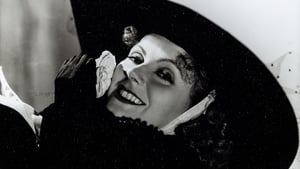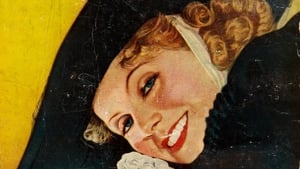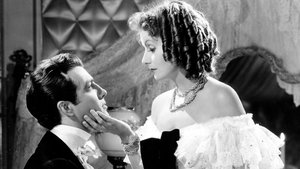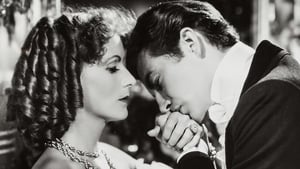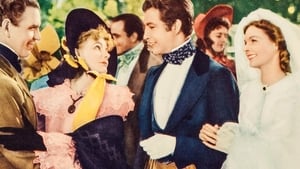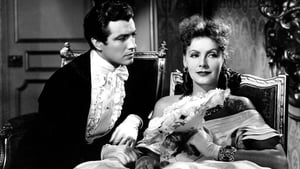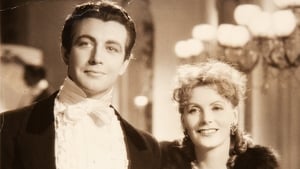Video Sources 0 Views
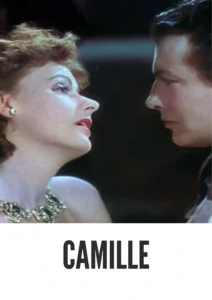
Synopsis
Camille: A Classic Tragedy Starring Greta Garbo and Robert Taylor, Now in Stunning Color

Step into the opulent yet heartbreaking world of 19th-century Paris with Camille, a timeless romantic tragedy from 1936, now beautifully colorized for a viewing experience that tugs at the heartstrings. Starring the iconic Greta Garbo as Marguerite Gautier, this film, also known as La Dame aux Camélias, is a poignant exploration of love, sacrifice, and societal constraints. Perfect for fans of classic cinema and those who appreciate a deeply moving story, this HD download brings a legendary performance to life on your screen.
Camille Storyline: A Love Story Amidst Parisian Glamour
Camille tells the story of Marguerite Gautier (Greta Garbo), a beautiful and alluring courtesan in Paris. Known for her extravagant lifestyle and captivating charm, Marguerite lives a life of luxury, attending lavish parties and captivating the attention of wealthy admirers. However, beneath the surface, she longs for true love and a life beyond the superficiality of her world.Her life takes an unexpected turn when she meets Armand Duval (Robert Taylor), a young and idealistic man from a respectable family. Their connection is instant and passionate, and they soon embark on a forbidden love affair that defies societal norms. Despite their deep affection for each other, their relationship is threatened by Armand’s disapproving father, who fears that Marguerite’s scandalous reputation will ruin his family’s honor.As Marguerite and Armand struggle to overcome the obstacles in their path, Marguerite is forced to make a heartbreaking decision that tests the boundaries of love and sacrifice. The film explores themes of social class, morality, and the complexities of human relationships, delivering a powerful and emotional narrative that resonates across generations. Ultimately, Camille is a timeless tale of love and loss that remains as relevant and moving today as it was upon its release.
Movie Cast
The film features a stellar cast of actors who bring this tragic love story to life:
- Greta Garbo as Marguerite Gautier
- Robert Taylor as Armand Duval
- Lionel Barrymore as Monsieur Duval
- Elizabeth Allan as Nichette
- Jessie Ralph as Nanine
Movie Genre
Camille falls into the genre of romantic tragedy, a timeless tale of love, loss, and sacrifice set against the backdrop of 19th-century Parisian society. Its emotional depth, combined with the stellar performances of Greta Garbo and Robert Taylor, make it a captivating and unforgettable cinematic experience.
Historical Context: A Golden Age Classic
Released in 1936, Camille is considered one of the crowning achievements of Hollywood’s Golden Age. Greta Garbo’s portrayal of Marguerite Gautier is widely regarded as one of the greatest performances in film history, earning her an Academy Award nomination. The film was produced during a time when Hollywood was producing lavish and emotionally resonant dramas that captivated audiences worldwide. Camille remains a testament to the artistry and craftsmanship of classic Hollywood cinema, showcasing the power of storytelling to evoke deep emotions and explore complex human experiences.
Colorization Details
This colorized version of Camille has been meticulously restored using modern digital techniques, enhancing the visual appeal while preserving the film’s original atmosphere of romance and tragedy. The colorization process involved carefully analyzing the grayscale tones of the original black and white footage and assigning appropriate colors to each scene. While the specific software used remains proprietary, the techniques employed included advanced algorithms for color palette selection and image enhancement. This painstaking process brings new life to the characters and settings, making the story even more engaging for modern audiences. While some may debate the merits of colorizing classic films, it introduces these films to a broader audience, ensuring their legacy for future generations.
Technical Details
- Director: George Cukor
- Screenplay: James Hilton, Zoë Akins, Frances Marion
- Based on: La Dame aux Camélias by Alexandre Dumas fils
- Cinematography: William H. Daniels, Karl Freund
- Edited by: Margaret Booth
- Production Company: Metro-Goldwyn-Mayer
- Distributed by: Metro-Goldwyn-Mayer
- Runtime: 109 minutes
Technical Specifications
- Download Format: MP4
- Resolution: HD (1080p)
- Compatibility: Compatible with most devices, including smartphones, tablets, computers, and smart TVs.
Reviews and Critical Reception
Camille (1936) is widely regarded as a masterpiece of classic Hollywood cinema, celebrated for its powerful performances, exquisite cinematography, and timeless story. Greta Garbo’s portrayal of Marguerite Gautier is particularly praised, earning her an Academy Award nomination and solidifying her status as one of the greatest actresses of all time. The film’s emotional depth and tragic romance continue to resonate with audiences, making it a beloved and enduring classic. As a testament to the artistry of Hollywood’s Golden Age, Camille remains a must-see for cinephiles and anyone who appreciates a beautifully crafted and emotionally resonant film.
FAQs
- Q: What is Camille about?
- A: Camille is a romantic tragedy about a Parisian courtesan who falls in love with a young man from a respectable family.
- Q: Is Greta Garbo in Camille (1936)?
- A: Yes, Greta Garbo stars as Marguerite Gautier in Camille, delivering one of her most iconic performances.
- Q: Is this version of Camille colorized?
- A: Yes, this version has been professionally colorized to enhance the viewing experience.
- Q: What makes Camille a classic film?
- A: Camille is celebrated for its powerful performances, exquisite cinematography, and timeless story of love and sacrifice.
- Q: What is the download format?
- A: The download format is MP4, which is compatible with most devices.
- Q: What resolution is the download?
- A: The resolution is HD (1080p), providing a high-quality viewing experience.
Download Now in HD!
Watch Camille Today!
